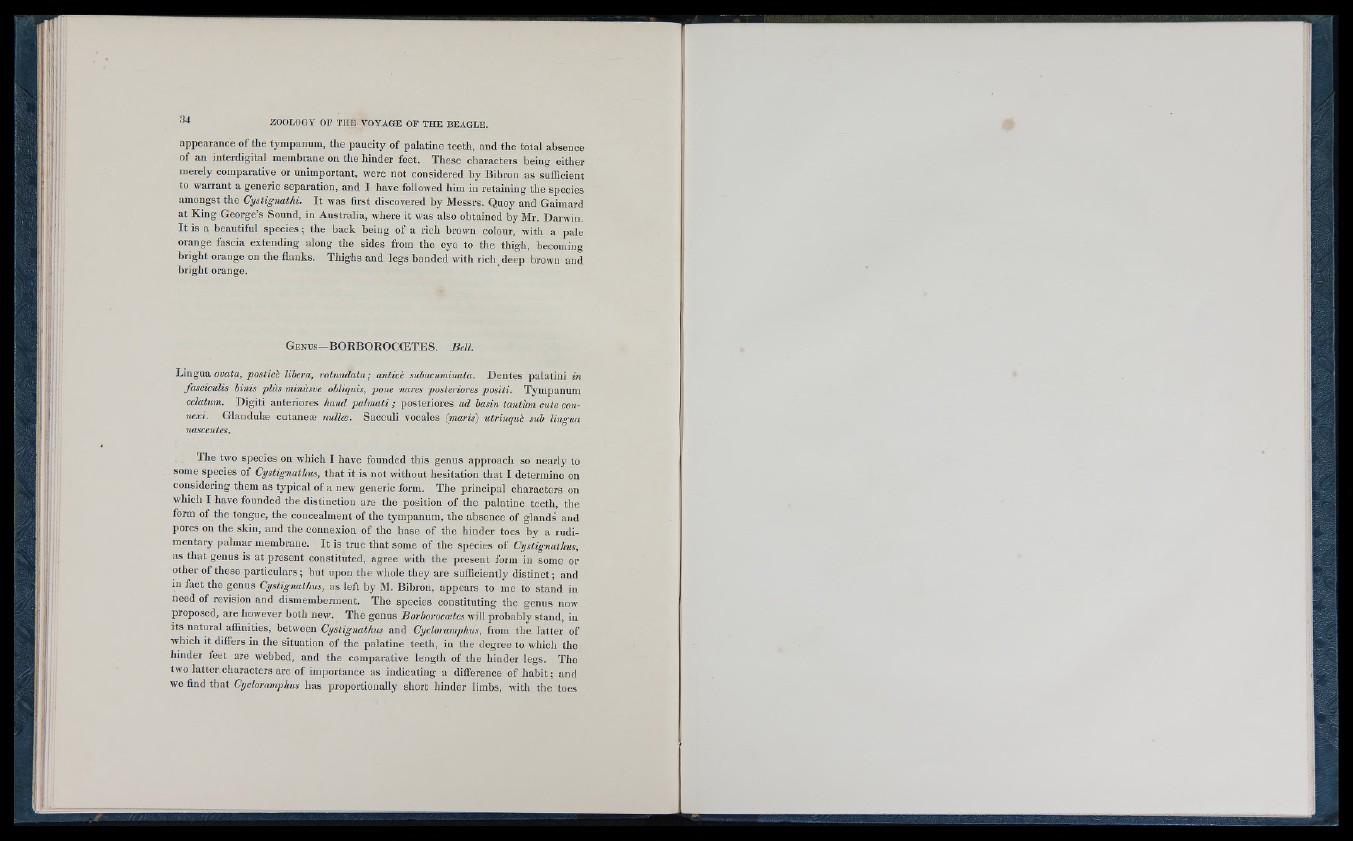
appearance of the tympanum, the paucity of palatine teeth, and the total absence
of an interdigital membrane on the liinder feet. These characters being either
merely comparative or unimportant, were not considered by Bibron as sufficient
to warrant a generic separation, and I have followed him in retaining the species
amongst the Cystignathi. I t was first discovered by Messrs. Quoy and Gaimard
at King George’s Sound, in Australia, where it was also obtained by Mr. Darwin.
I t is a beautiful spec ie s; the back being of a rich brown colour, with a pale
orange fascia extending along the sides from the eye to the thigh, becoming
bright orange on the flanks. Thighs and legs handed with rich , deep brown and
bright orange.
G e n u s— BORBOROCOETES. B e ll
Lingua ovaia, posticè libera, rotundata; anticè subacimiinaia. Dentes palatini in
fasciculis binis pliis miniisve obliquis, pone nares posteriores positi. Tympanum
celatum. Digiti anteriores baud palmati ; posteriores ad basin tantum cute con-
nexi. Glandulæ cutaneæ nulloe. Sacculi vocales (maris) utrinquè sub lingua
nascentes.
The two species on which I have founded this genus approach so nearly to
some species of Cystignathus, th a t it is not without hesitation th a t I determine on
considering them as typical of a new generic form. The principal characters on
which I have founded the distinction are the position of the palatine teeth, the
form of the tongue, the concealment of the tympanum, the absence of glands and
pores on the skin, and the connexion of tlie base of the hinder toes by a rudimentary
palmar membrane. I t is true th a t some of the species of Cystignathus,
as th a t genus is a t present constituted, agree with the present form in some or
other of these particulars ; but upon the whole they are sufficiently distinct ; and
in fact the genus Cystignathus, as left by M. Bibron, appears to me to stand in
need of revision and dismemberment. The species constituting the genus now
proposed, are however both new. The genus Borboroccetes will probably stand, in
its natural affinities, between Cystignathus and Cycloramphus, from the latter of
which it differs in the situation of the palatine teeth, in the degree to which the
hinder feet are webbed, and the comparative length of the hinder legs. The
two latter characters are of importance as indicating a difference of liabit; and
we find th a t Cycloramphus has proportionally short hinder limbs, with the toes